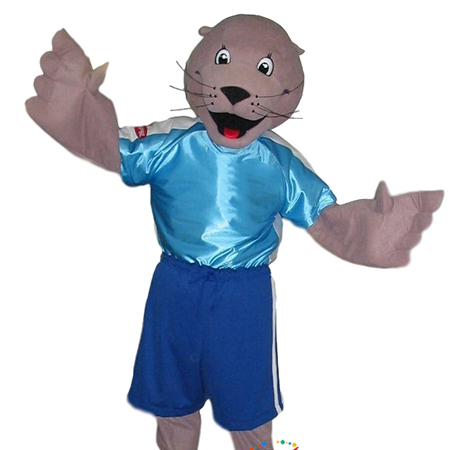Mascot costumes have long been an integral part of sports, entertainment, and corporate branding. Over the decades, these larger-than-life characters have undergone significant transformations, reflecting changes in technology, materials, and cultural trends. From their humble beginnings to today’s sophisticated designs, mascot costumes offer a fascinating glimpse into the evolution of popular culture.
In the early 20th century, mascot costumes were relatively simple affairs. Typically made from basic materials like felt and burlap, early costumes focused more on functionality than aesthetic appeal. These rudimentary outfits often lacked intricate details, relying instead on bold colors and exaggerated features to capture attention. The first mascot costumes appeared at university sports events and community gatherings, embodying the spirit and enthusiasm of the attendees.
The mid-20th century marked a period of innovation for mascot costumes. Advances in fabric technology allowed for more complex designs and vibrant colors. Polyester and other synthetic fabrics became commonplace, offering durability and ease of maintenance. This era also saw the introduction of foam rubber, which provided lightweight yet sturdy structures for larger-than-life heads and appendages. Mascots began to sport more detailed facial expressions and articulated joints, enabling a greater range of motion and interaction with fans.

By the 1970s and 1980s, mascot costumes had become synonymous with professional sports teams and major corporate brands. The rise of televised sports amplified the importance of having a recognizable and engaging mascot. Designers started incorporating elements of pop culture and current trends, creating characters that resonated with diverse audiences. The Philadelphia Phillie Phanatic and San Diego Chicken are prime examples of this era’s creativity and flair.
In the 1990s, technological advancements further revolutionized mascot costume design. The advent of computer-aided design (CAD) software enabled designers to create more precise and intricate patterns. This decade also witnessed the integration of electronic components, such as LED lights and sound modules, which added a dynamic element to performances. Mascots could now “talk” and interact with the crowd in ways previously unimaginable.
The 21st century has seen mascot costumes evolve into high-tech marvels. Modern mascots often feature advanced robotics and AI capabilities, allowing for unprecedented levels of interactivity and realism. Materials have continued to improve, with breathable fabrics and temperature control systems ensuring performer comfort during long events. Social media and digital platforms have also transformed how mascots engage with fans, extending their reach beyond the stadium or event venue.

Today, mascot costumes are not just limited to sports teams; they can be found in theme parks, movie promotions, and even political campaigns. Each new generation of mascots reflects contemporary tastes and trends, while continuing to uphold the timeless tradition of bringing joy and excitement to audiences. As we look to the future, it’s clear that mascot costumes will continue to adapt and innovate, remaining a beloved staple of entertainment worldwide.